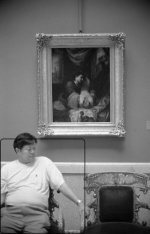Freakscene
Obscure member
Hmmm...is this something that occurs with every image or is it infrequent?😕 The reason I ask is not knowing which camera, focus system, etc. I don't know what to think but it seems that the focus occurred right in the center of the image but the top half is more in focus than the lower left portion. Almost like a zone of out-of-focus area when compared to the rest of the image. Weird.
If it happens all the time, what can you do to fix it? If it is infrequent, what causes it? Questions that I would like to hear solved as I have never encountered this problem.:angel:
Focus shift is 100% consistent. It is a property of all optical systems. It happens in every lens. You only see it when the focus shift moves the plane of optical best focus away more than the increase in depth of field that occurs when you stop down. Erwin puts describes it for the f1 Noctilux here:
http://www.imx.nl/photo/leica/lenses/lenses/page56.html
My strategy was to make sure that my Noctilux was properly calbrated (it went to Leica for this) and then to check where the depth of field caught up with the focus shift. I found I get soft focus from f2.5-4.5. So I use it wide open to f2. I could also try to learn how much to lean in, but that would bug me, and I have a Hexanon 50/2 that doesn't display visible focus shift, so in practice I just use the Nocti wide open and the hexanon for everything else.
Marty


